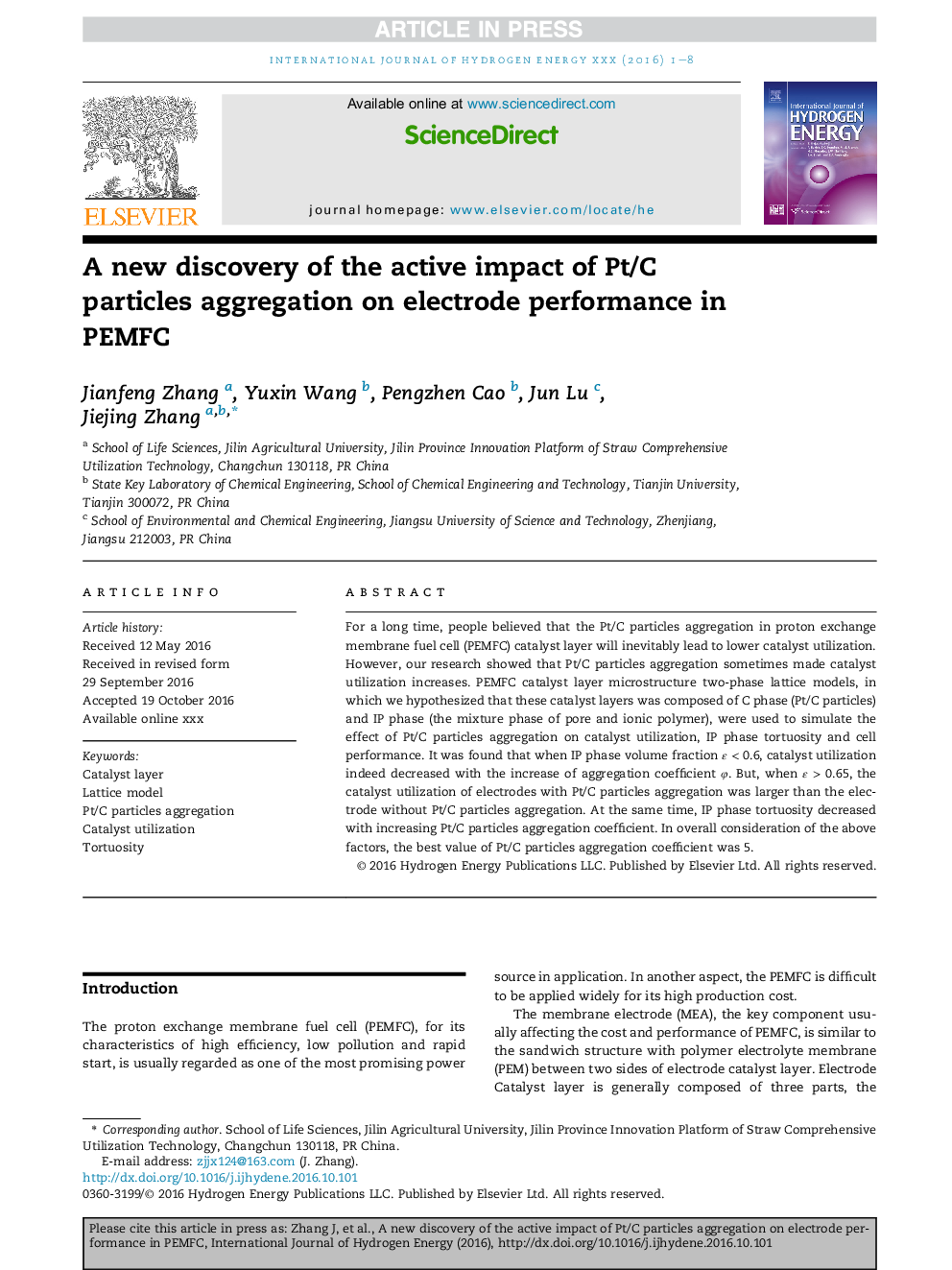| Article ID | Journal | Published Year | Pages | File Type |
|---|---|---|---|---|
| 5148108 | International Journal of Hydrogen Energy | 2017 | 8 Pages |
Abstract
For a long time, people believed that the Pt/C particles aggregation in proton exchange membrane fuel cell (PEMFC) catalyst layer will inevitably lead to lower catalyst utilization. However, our research showed that Pt/C particles aggregation sometimes made catalyst utilization increases. PEMFC catalyst layer microstructure two-phase lattice models, in which we hypothesized that these catalyst layers was composed of C phase (Pt/C particles) and IP phase (the mixture phase of pore and ionic polymer), were used to simulate the effect of Pt/C particles aggregation on catalyst utilization, IP phase tortuosity and cell performance. It was found that when IP phase volume fraction ε < 0.6, catalyst utilization indeed decreased with the increase of aggregation coefficient Ï. But, when ε > 0.65, the catalyst utilization of electrodes with Pt/C particles aggregation was larger than the electrode without Pt/C particles aggregation. At the same time, IP phase tortuosity decreased with increasing Pt/C particles aggregation coefficient. In overall consideration of the above factors, the best value of Pt/C particles aggregation coefficient was 5.
Related Topics
Physical Sciences and Engineering
Chemistry
Electrochemistry
Authors
Jianfeng Zhang, Yuxin Wang, Pengzhen Cao, Jun Lu, Jiejing Zhang,
